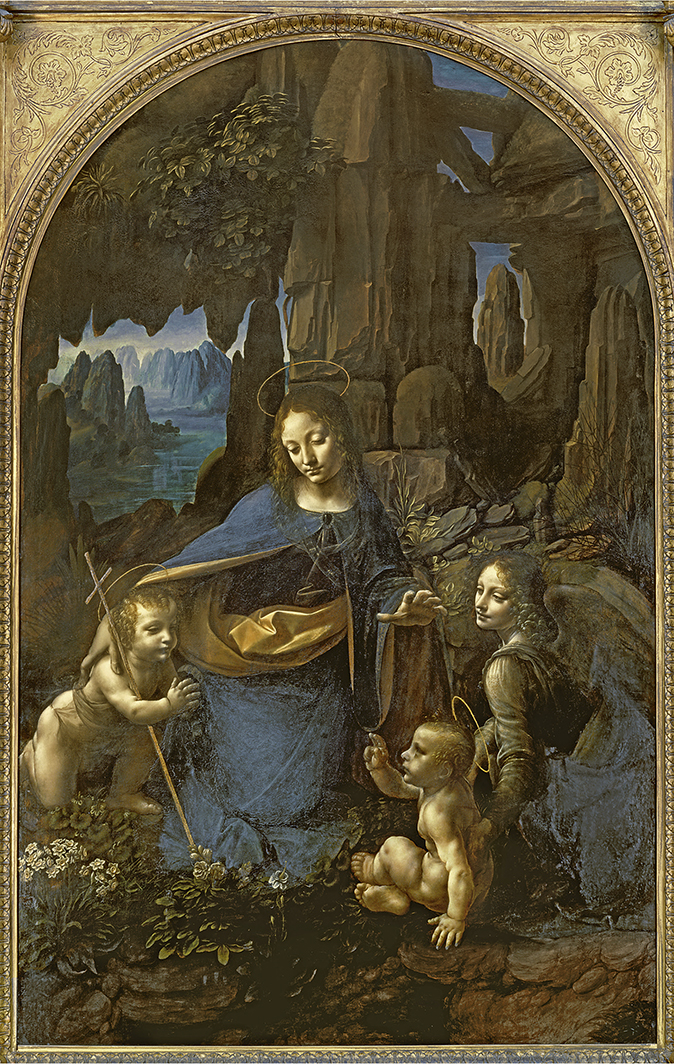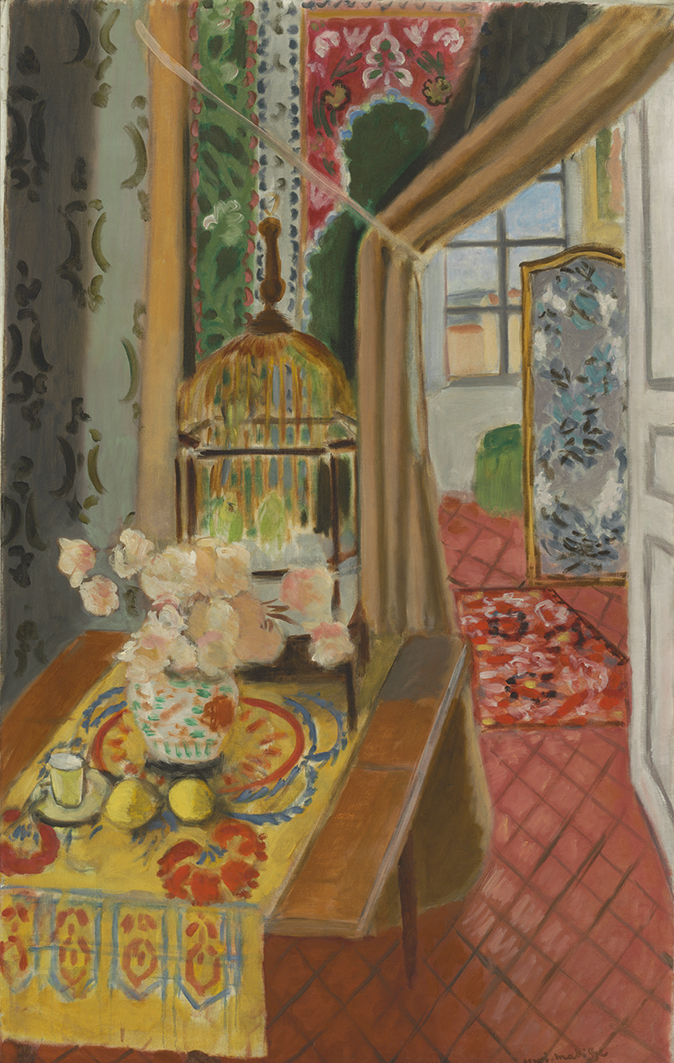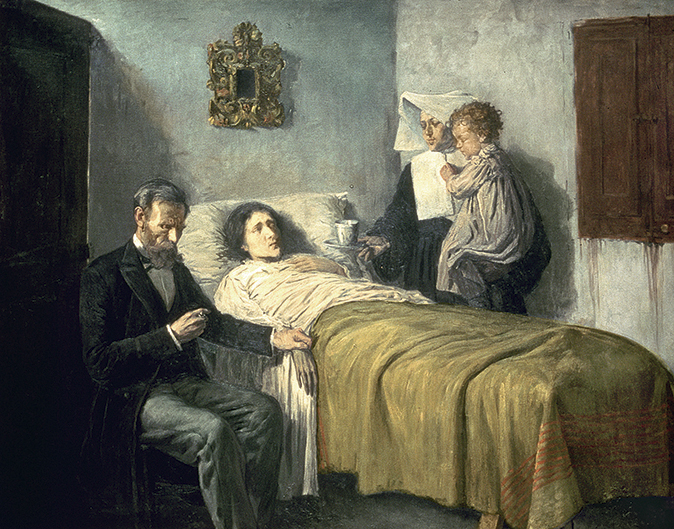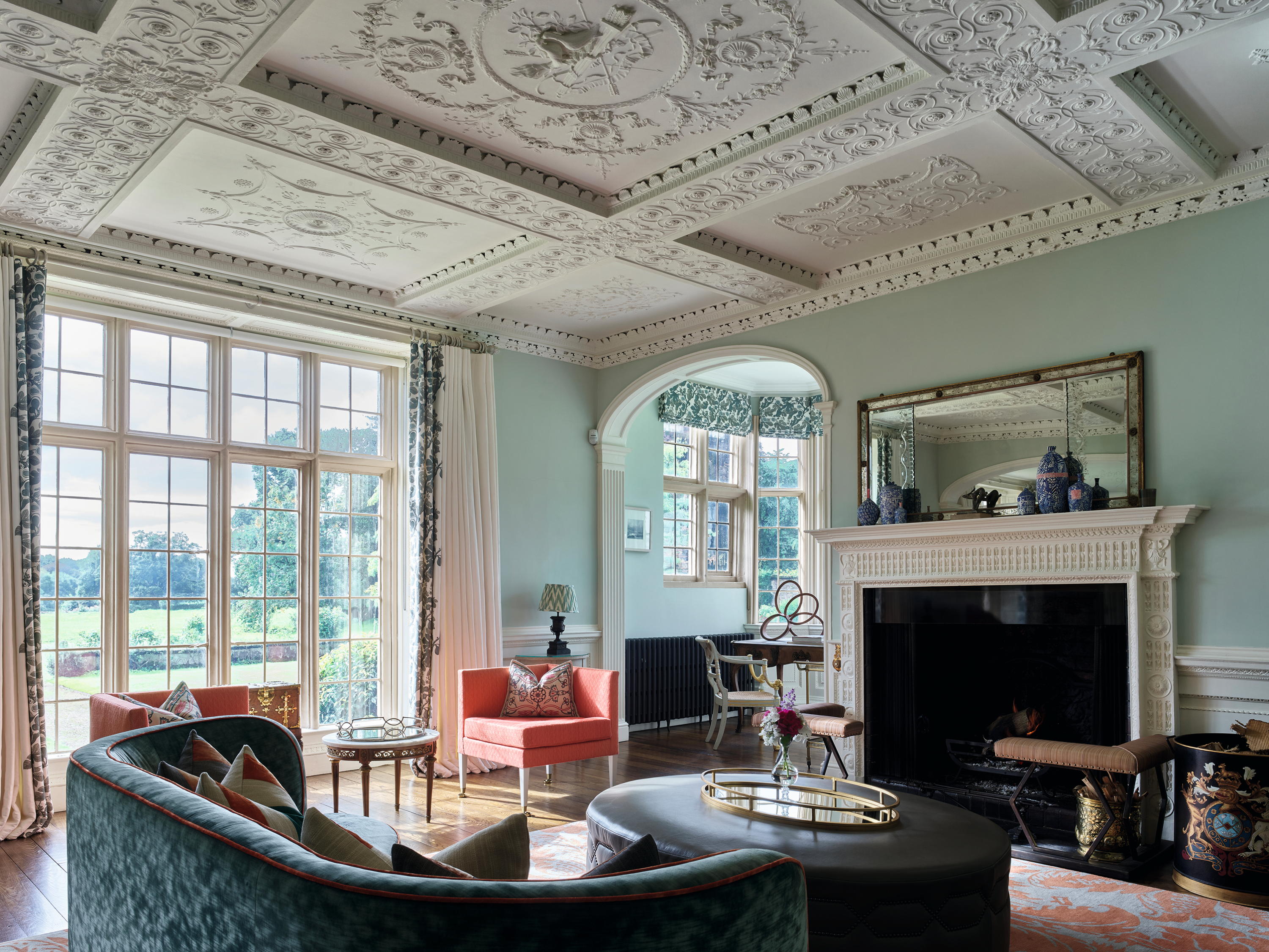My favourite painting: Katie Hickman
'I was fascinated not only by their faces—at once human and supernatural in their beauty, illuminated as if by moonlight—but also by background detail'


The Virgin of the Rocks, 1491/2–9 and 1506–8, by Leonardo da Vinci (1452–1519), 74½ in by 47¼in, The National Gallery, London WC2
Katie Hickman says: This is the first painting I can remember that really moved me. I was 10 and would often be taken to the National Gallery on Sundays as an outing from boarding school. Perhaps it was the contemplation of a family group that I found so poignant? I was fascinated not only by their faces—at once human and supernatural in their beauty, illuminated as if by moonlight—but also by background detail: the clump of narcissi at John the Baptist’s feet, the craggy rocks embracing a mysterious green lagoon and the golden folds of the Virgin’s robe. Revisiting the painting recently, I found it every bit as mesmerising.
Katie Hickman is a novelist and historian. Her new novel, The House at Bishopsgate, is published by Bloomsbury this week
John McEwen comments on The Virgin of the Rocks: Vasari placed Leonardo in the vanguard of the modern manner for his ‘force and boldness of design, the subtlest counterfeiting of all the minutiae of Nature exactly as they are, with good rule, better order, correct proportion, perfect design and divine grace’.
This panel was painted to replace an earlier version, now in the Louvre. The original painting had been commissioned for inclusion in an altarpiece by a Milan-based Franciscan brotherhood dedicated to the immaculate Conception, but contractual disputes resulted in it being sold to a third party. Scientific analysis reveals that the replacement was painted over a sacred, but otherwise unrelated, picture.
The Louvre version showed Leonardo for the first time putting a group of figures—Virgin, messenger angel and infant Jesus blessing infant John the Baptist—in a complex landscape. in the London version, the gradual transition between light and dark gives greater unity to the composition.
There is symbolism in the darkness. The writer Samuel Lock, who died recently, identified the black hole at the Virgin’s core as a deliberate glimpse of the everlasting. This accords with the then lack of an iconography for picturing her immaculate Conception: that she was born of human parents, but, by God’s privilege, conceived without the ‘stain’ of original sin common to all mortals. Jeremiah (31:22) testified the sinless Virgin as God’s first ‘creation’.
Exquisite houses, the beauty of Nature, and how to get the most from your life, straight to your inbox.
Leonardo found particular inspiration in Proverbs chapter 8, in which the female personification of ‘wisdom’ attests: ‘The Lord possessed me in the beginning of his way... before the mountains were settled, before the hills was I brought forth.’

My favourite painting: India Knight
'I want to live in the interiors he painted'

My favourite painting: Clare Marx
'For me, it brings into focus the importance of physical contact in the doctor-patient relationship...'
Country Life is unlike any other magazine: the only glossy weekly on the newsstand and the only magazine that has been guest-edited by His Majesty The King not once, but twice. It is a celebration of modern rural life and all its diverse joys and pleasures — that was first published in Queen Victoria's Diamond Jubilee year. Our eclectic mixture of witty and informative content — from the most up-to-date property news and commentary and a coveted glimpse inside some of the UK's best houses and gardens, to gardening, the arts and interior design, written by experts in their field — still cannot be found in print or online, anywhere else.
-
 War, ruin and renaissance: Dorfold Hall's 400-year journey through the ages
War, ruin and renaissance: Dorfold Hall's 400-year journey through the agesJohn Goodall describes the antiquarian rediscovery of Dorfold Hall, Cheshire — home of Charles and Dr Candice Roundell — and the recent spectacular renewal of this important Jacobean house. Photographs by Paul Highnam for the Country Life Photo Library.
-
 The Old Rectory for sale in a village up the road from Jane Austen's home, where the family lived that might have inspired some of her most memorable characters
The Old Rectory for sale in a village up the road from Jane Austen's home, where the family lived that might have inspired some of her most memorable charactersIn the village of Dummer, close to Jane Austen's family home at Steventon, a beautiful old rectory has cone to the market. Penny Churchill takes a look.
-
 'As a child I wanted to snuggle up with the dogs and be part of it': Alexia Robinson chooses her favourite painting
'As a child I wanted to snuggle up with the dogs and be part of it': Alexia Robinson chooses her favourite paintingAlexia Robinson, founder of Love British Food, chooses an Edwin Landseer classic.
-
 The Pre-Raphaelite painter who swapped 'willowy, nubile women' for stained glass — and created some of the best examples in Britain
The Pre-Raphaelite painter who swapped 'willowy, nubile women' for stained glass — and created some of the best examples in BritainThe painter Edward Burne-Jones turned from paint to glass for much of his career. James Hughes, director of the Victorian Society, chooses a glass masterpiece by Burne-Jones as his favourite 'painting'.
-
 'I can’t look away. I’m captivated': The painter who takes years over each portrait, with the only guarantee being that it won't look like the subject
'I can’t look away. I’m captivated': The painter who takes years over each portrait, with the only guarantee being that it won't look like the subjectFor Country Life's My Favourite Painting slot, the writer Emily Howes chooses a work by a daring and challenging artist: Frank Auerbach.
-
 My Favourite Painting: Rob Houchen
My Favourite Painting: Rob HouchenThe actor Rob Houchen chooses a bold and challenging Egon Schiele work.
-
 My Favourite Painting: Jeremy Clarkson
My Favourite Painting: Jeremy Clarkson'That's why this is my favourite painting. Because it invites you to imagine'
-
 The chair of the National Gallery names his favourite from among the 2,300 masterpieces — and it will come as a bit of a shock
The chair of the National Gallery names his favourite from among the 2,300 masterpieces — and it will come as a bit of a shockAs the National Gallery turns 200, the chair of its board of trustees, John Booth, chooses his favourite painting.
-
 'A wonderful reminder of what the countryside could and should be': The 200-year-old watercolour of a world fast disappearing
'A wonderful reminder of what the countryside could and should be': The 200-year-old watercolour of a world fast disappearingChristopher Price of the Rare Breed Survival Trust on the bucolic beauty of The Magic Apple Tree by Samuel Palmer, which he nominates as his favourite painting.
-
 My favourite painting: Andrew Graham-Dixon
My favourite painting: Andrew Graham-Dixon'Lesson Number One: it’s the pictures that baffle and tantalise you that stay in the mind forever .'
